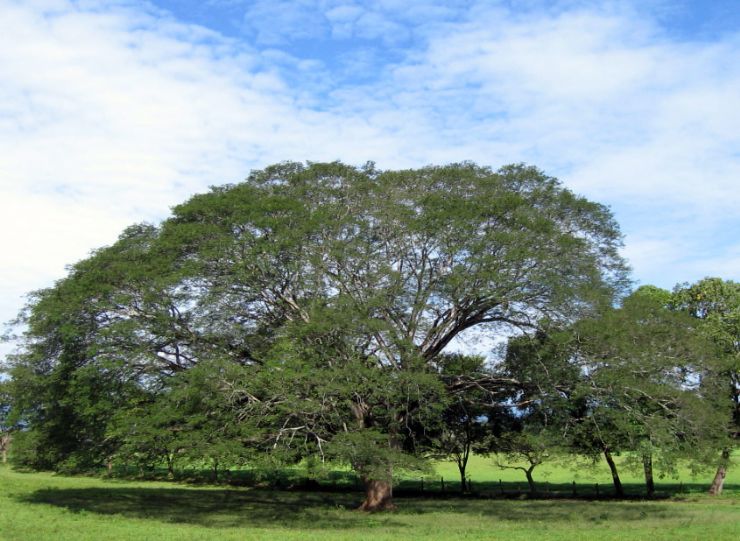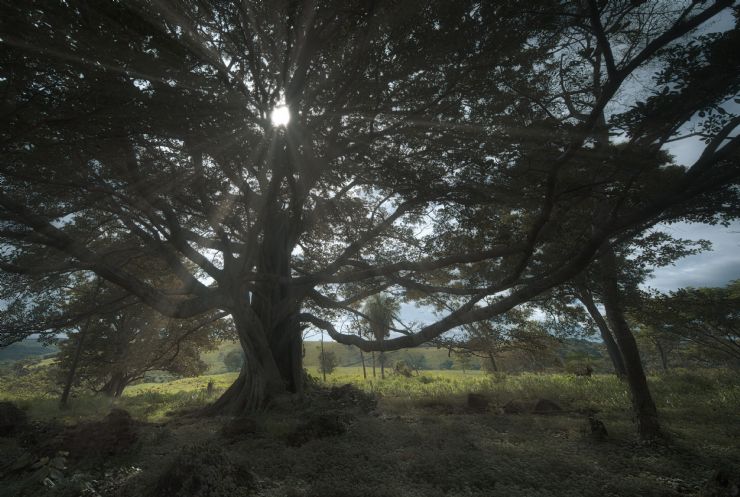
Guanacaste Tree or Elephant Ear Tree - Costa Rica National Tree
The national tree of Costa Rica is the Guanacaste, or Elephant Ear Tree.
It is an impossible-to-miss flowering tree that is most known for its immensity, and characterized by a spherical crown.
The Elephant Ear Tree is abundant in Costa Rica, and animals often hide under it during the intense sunny days in Guanacaste.
The Elephant Ear Tree became the national tree of Costa Rica on August 31, 1959. I have heard that the tree was chosen in part because of its greenery and beauty, but also because the shade that it provides is symbolic of the protection that the people of Costa Rica receive from their government!
The national tree of Costa Rica is certainly something to see in person! I am always impressed by how majestic this tree is, and I can relate to it being a symbol of stability, strength and growth.
7 Days / 6 Nights
Starting at $779 per person

Guanacaste Tree Seed Pods & Sunset in Guanacaste Costa Rica
Identification of the Guanacaste Tree or the Elephant Ear Tree
The scientific name of the Guanacaste tree is "Enterolobium cyclocarpum", and it belongs to the leguminous family.
Its seed pods are shaped like ears, which is where its common name comes from. The crown of the tree is a dome of lively green whose width exceeds the overall height of the tree. The general height of the tree ranges between 82 feet to 164 feet, and the diameter of the trunk ranges between 6 feet to 7 feet. The bark of the tree is a reddish-brown wood.
The tree is most common on the Northern Pacific Coast, and is known to thrive in the low-elevation, tropical habitat in Guanacaste, its namesake.
It can live for up to 70 years, produces fruit from January to May (coincidentally during the high season), and blooms its white flowers from November to March. The flowers are white and round, while the fruits are dark brown (when ripe), hard and glossy.

Light Shining through a Guanacaste Tree in Costa Rica
Cultural Significance
Costa Rica's national tree is not only a tremendously beautiful sight; it is also significant to my homeland's culture!
The seeds of the Elephant Ear Tree have many uses among the people of Costa Rica. The seeds that are attractive can be collected and crafted into jewelry. I love seeing the creative pieces for sale by locals!
The green seeds can be boiled and eaten. We do have to be careful though, since Guanacaste tree seeds also grow rapidly and have extremely strong roots, they can be an invasive species.
The wood from the tree is my favorite! It is water-resistant and lightweight, which makes it easy to use for crafting all sorts of projects. The Elephant Ear Tree wood has been known to be used to make furniture, structural pieces like doors and window frames, cart wheels, crosses, ships and cabinets.
Some people also use the plant, sap and bark of Costa Rica's national tree for medicinal purposes. I'm no doctor so I certainly can't recommend these uses, but I have heard that colds and lung infections have been treated with the plant, and that soap can be substituted with extract from the bark.
The tree also provides much-needed shade in fields, for travelers and for animals. The branches, leaves and fruit also provide food for animals, like cattle.

